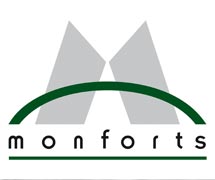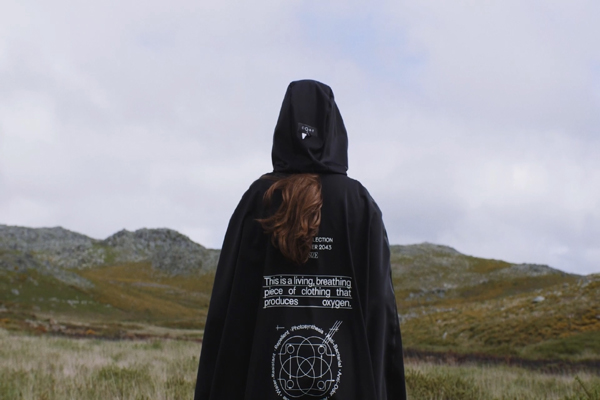Denim manufacturers employing trusted Monforts technologies continue to lead the field when it comes to sustainable fabric manufacturing, rapidly adopting every new advance in fibres, dyes and chemicals, as well as process and supply improvements and recycling options into their operations.
Many took the opportunity to showcase their latest activities at Première Vision’s Digital Denim Week, held from July 5-9.
Holistic
The new Naveena Denim Mills (Pakistan) Holistic collection, for example, employs a suite of sustainable materials such as organic cotton and post-consumer and post-industrial waste cotton that has been shredded and recycled at its in-house unit in Pakistan.
Hemp and Tencel provide sustainable and aesthetic qualities to the collection and the company is replacing conventional elastane with Roica’s Cradle-to-Cradle certified degradable option and polyester with Circulose – a material developed by re:newcell of Sweden that repurposes discarded cotton textiles, such as worn-out denim jeans, through a process akin to recycling paper.
“At Naveena, we constantly ask ourselves how we can create lasting social and environmental impact while designing new products and services for the market,” said Aydan Tuzun, Naveena’s Executive Director of Global Sales and Marketing.
According to Première Vision experts, denims featuring blends with bio-sourced fibres such as nettle and kapok are now being used to attain softer handles, a lighter feel and natural waterproofing, avoiding the need for additional finishing treatments. Both are highly insulating fibres, while thanks to its almost silk-like visual and tactile advantages, soy fibre is an eco-friendly alternative and biopolymers made from corn, beet and sugar cane are all emerging as potential new solutions.
Open secrets
Supply chain transparency is also becoming increasingly important, and Turkey’s Bossa is now sharing information on its dyes, energy sources and recycled content use with its customers. For organic cotton in particular, Bossa provides QR codes with which brands can identify the names of individual farms and their locations, as well as details such as the origins of specific seeds and the use of irrigation by growers.
“We believe that if we are doing something good, it shouldn’t be a best-kept secret, and we are also sharing this information with other denim manufacturers,” said Per Besim Özek, Bossa’s Strategy and Business Development Director. “Traceability is already an expectation rather than a differentiator since brands want to see the data. Some retailers will even establish ultimatums, asking suppliers to prove specific targets have been met, in order to retain their business.”
Turkey’s Orta’s new Denim Route – inspired by the historical Silk Road for trade between the East and West – is an interactive supplier map detailing the regions from which it sources cotton, dyestuff, chemicals and various fibres to complement its other transparency initiatives.
Via a dedicated app, the Denim Route shares three years’ of LCA (life cycle assessment) data on each of the company’s fabrics featured. By scanning the QR code on a product’s hangtag, users can pull up the data for detailed information.
More than just a label saying that garment are ‘ethically-made’ or ‘sustainably-sourced,’ transparency of sourcing back to the first steps of the supply chain, the processes and the companies involved are becoming a consumer mandate, the company says.
Game changer
Meanwhile, a living and breathing piece of clothing that absorbs carbon dioxide while simultaneously producing oxygen was introduced at Digital Denim Week 2021 by Azgard 9 (Pakistan) .
Treated with microbial pigmentation, this garment – which is currently being analysed by all of the company’s global customers, from large luxury fashion groups like LVMH to fast fashion brands like Zara – basically behaves like a plant or tree.
During its life cycle, it will improve the immediate environment of the wearer and produce approximately the same amount of oxygen as an oak tree. In addition, the garment is water resistant and breathable, with advanced antimicrobial and anti-odour properties.
“While brands are thinking about their next collections, we have been thinking about collections of and for the future,” said Azgard 9 CEO Ahmed Shaikh. “Essentially we want to provide a climate positive result simply from everyone wearing clothes. The goal now is to turn this into a mainstream concept.”
Caretakers
“Our photosynthetic coating is a living layer of photosynthetic microorganisms that we embed into textiles,” explained Dian-Jen Lin of the Post Carbon Lab in London which has worked with Azgard 9 on the development. “What this means is that it absorbs carbon dioxide from the atmosphere and releases oxygen during both its production and the user phase.
“It’s radical because like a plant, textiles treated with microbial pigmentation have basic survival needs and require an adjustment in mentality and behaviour by the consumer. They have to adopt a caretaker role, but we’ve developed the coating so it responds to artificial light and only needs a little moisture – you can hang it up after you shower and the humidity will be enough.”
“It is really inspiring to see such innovations continue to emerge from the denim sector,” said Monforts Marketing Manager Nicole Croonenbroek. “Monforts has a leading position in the field of denim finishing with its well proven range for resource-efficient and economical processing and our partners are constantly setting themselves new goals in respect of sustainable production – and more importantly, going beyond them. We work closely with them to constantly optimise processing parameters and achieve further savings in energy, water and raw materials throughout the dyeing and finishing stages of production as their partner for value added finishing.”
The key vertically-integrated users of Monforts equipment present at Première Vision Digital Denim Week included AGI Denim (Pakistan), Azgard 9 (Pakistan), Berto (Italy), Bossa (Turkey), DNM (Turkey), Kilim (Turkey) and Orta (Turkey).

